A study reveals light as a new dynamic knob to control ferromagnetic order in moiré superlattices.
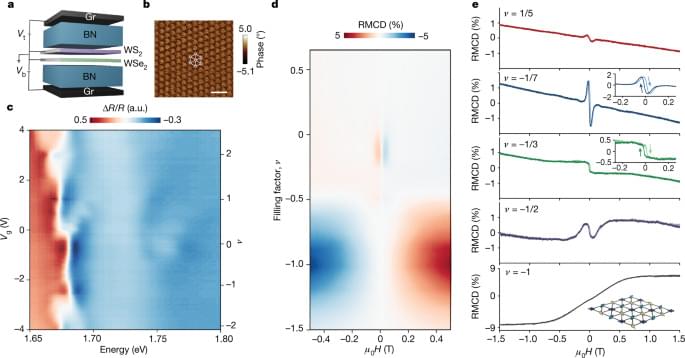

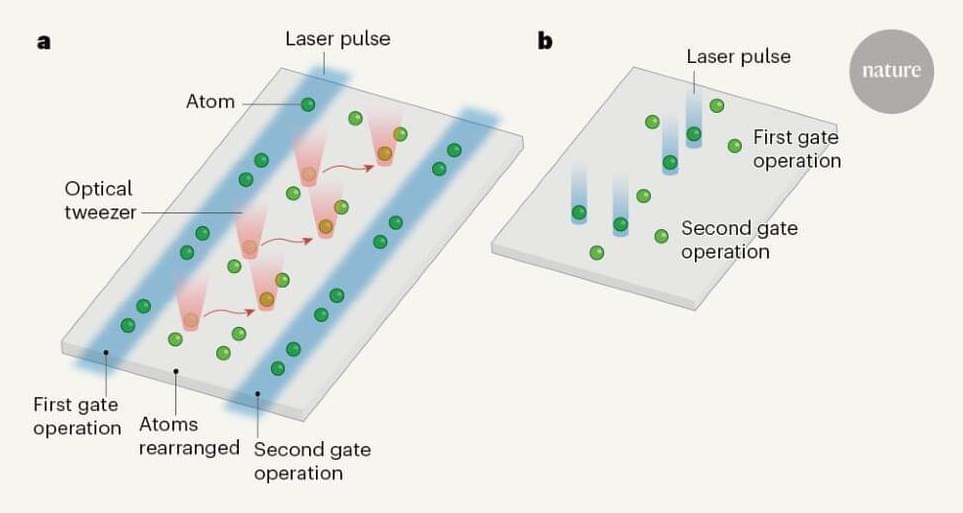

Impacts on Saturn’s mysterious moon may have mixed water and organic molecules in a warm environment.
Physicists at the University of California, Irvine have demonstrated the use of a hydrogen molecule as a quantum sensor in a terahertz laser-equipped scanning tunneling microscope, a technique that can measure the chemical properties of materials at unprecedented time and spatial resolutions.
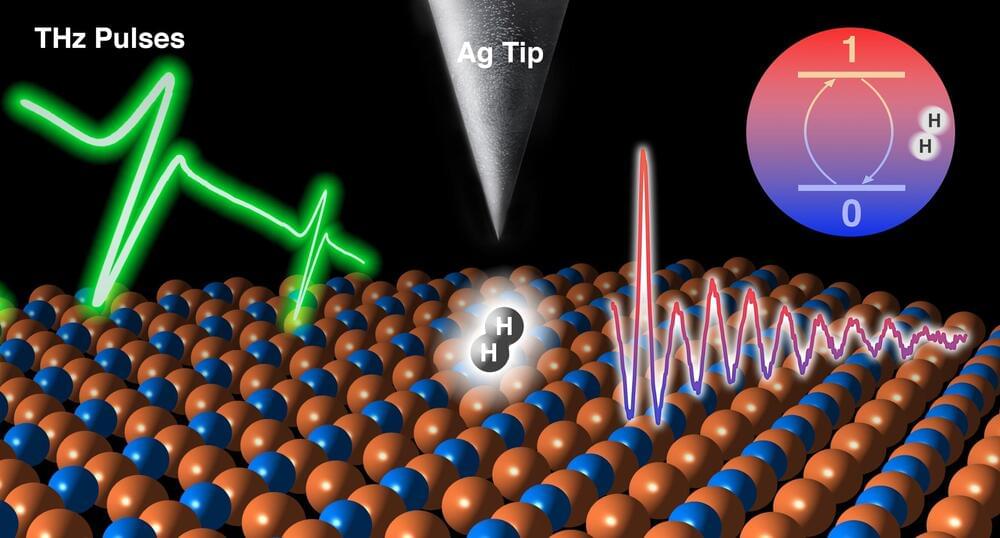
Physicists at the University of California, Irvine have demonstrated the use of a hydrogen molecule as a quantum sensor in a terahertz laser-equipped scanning tunneling microscope, a technique that can measure the chemical properties of materials at unprecedented time and spatial resolutions.
This new technique can also be applied to analysis of two-dimensional materials which have the potential to play a role in advanced energy systems, electronics and quantum computers.
Today in Science, the researchers in UCI’s Department of Physics & Astronomy and Department of Chemistry describe how they positioned two bound atoms of hydrogen in between the silver tip of the STM and a sample composed of a flat copper surface arrayed with small islands of copper nitride. With pulses of the laser lasting trillionths of a second, the scientists were able to excite the hydrogen molecule and detect changes in its quantum states at cryogenic temperatures and in the ultrahigh vacuum environment of the instrument, rendering atomic-scale, time-lapsed images of the sample.
Are quantum events required for consciousness in a very special sense, far beyond the general sense that quantum events are part of all physical systems? What would it take for quantum events, on such a micro-scale, to be relevant for brain function, which operates at the much higher level of neurons and brain circuits? What would it mean?
Free access to Closer to Truth’s library of 5,000 videos: http://bit.ly/376lkKN
Watch more interviews on the Quantum Physics of Consciousness: https://bit.ly/37xFvYm.
Menas Kafatos is a physicist and the Director of the Center of Excellence and has served as Founding Dean, Schmid College of Science & Technology at Chapman University.
Register for free at CTT.com for subscriber-only exclusives: http://bit.ly/2GXmFsP
Closer to Truth, hosted by Robert Lawrence Kuhn and directed by Peter Getzels, presents the world’s greatest thinkers exploring humanity’s deepest questions. Discover fundamental issues of existence. Engage new and diverse ways of thinking. Appreciate intense debates. Share your own opinions. Seek your own answers.
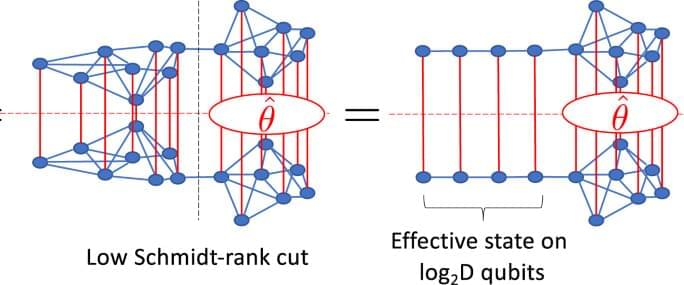
Basically all this says is that a basic quantum computer made of a simulation of an infinite quantum computer. So essentially infinite quantum computers could make the internet much more instant.
To parallelise our simulation on a small NISQ machine, we first identify partitions of the system where the effect of one partition upon the other can be summarised by a small amount of information. This is achieved by making Schmidt decompositions across the cut: \(\left|\psi \right\rangle =\mathopsum
olimits_alpha = 1Dlambda ^alpha \left|phi _L^alpha \right\rangle \left|phi _R^alpha \right\rangle,\) where \(\left|phi _L^alpha \right\rangle\) are an orthonormal set of states to the left of the cut and \(\left|phi _R^alpha \right\rangle\) the same on the right. The λα are known as the Schmidt coefficients and D the Schmidt rank or bond order. Retaining λα only above some threshold value provides a way to compress representations of a quantum state; the MPS construction can be obtained by applying this procedure sequentially along a spin chain4.
If an observation is made on the right-hand-side of such a cut, the effect of the quantum state on the left upon the observation can be summarised by just D variables corresponding to the Schmidt coefficients. This same effect can be achieved by an effective state on a spin chain of length \(log\,_2D\) —see Fig. 1 —which can be parametrised on the quantum circuit by an SU (D2) unitary VL. This encodes both the Schmidt coefficients λα and the orthonormal states \(\left|phi _L^alpha \right\rangle\). The latter does not contribute to observables on the right and so in principle, VL can be parametrised by just D variational parameters. The precise numerical values must be determined by solving a quantum mechanical problem on the left of the system. Similarly, for observations made to the left of the cut, the effect of the right-hand side can be summarised by a unitary VR.

This could lead to a truly random number generator making things much more secure.
Random numbers are crucial for computing, but our current algorithms aren’t truly random. Researchers at Brown University have now found a way to tap into the fluctuations of quasiparticles to generate millions of truly random numbers per second.
Random number generators are key parts of computer software, but technically they don’t quite live up to their name. Algorithms that generate these numbers are still deterministic, meaning that anyone with enough information about how it works could potentially find patterns and predict the numbers produced. These pseudo-random numbers suffice for low stakes uses like gaming, but for scientific simulations or cybersecurity, truly random numbers are important.
In recent years scientists have turned to the strange world of quantum physics for true randomization, using photons to generate strings of random ones and zeroes or tapping into the quantum vibrations of diamond. And for the new study, the Brown scientists tried something similar.

Circa 2015 This is basically amazing leading to speeds in a computer basically infinite.
Quantum gases of atoms and exciton-polaritons are nowadays a well established theoretical and experimental tool for fundamental studies of quantum many-body physics and suggest promising applications to quantum computing. Given their technological complexity, it is of paramount interest to devise other systems where such quantum many-body physics can be investigated at a lesser technological expense. Here we examine a relatively well-known system of laser light propagating through thermo-optical defocusing media: based on a hydrodynamical description of light as a quantum fluid of interacting photons, we investigate such systems as a valid, room temperature alternative to atomic or exciton-polariton condensates for studies of many-body physics.
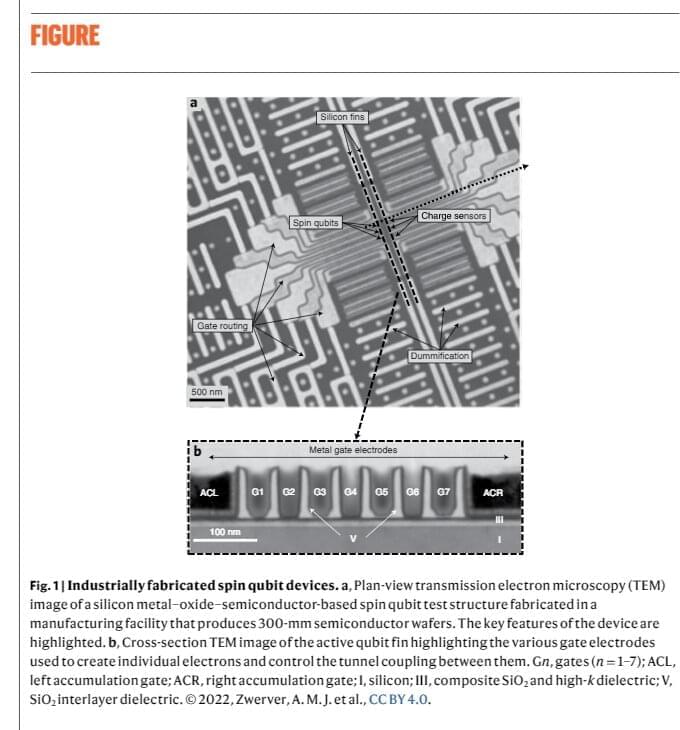
Quantum computers are promising computing machines that perform computations leveraging the collective properties of quantum physics states. These computers could help to tackle many computational problems that are currently intractable with conventional computers.
Despite their promise, fabricating quantum computers on a large-scale is currently very challenging, as a full-scale quantum computer integrates millions of qubits. To ensure that they can be produced using industrial semiconductor manufacturing processes, quantum device engineers have been trying to create quantum computers based on silicon quantum dots.
Nonetheless, existing quantum computers have been primarily fabricated using electron-beam lithography and conventional lift-off processes. This greatly limits their production rates, as both these processes only yield a few properly functioning devices at a time.
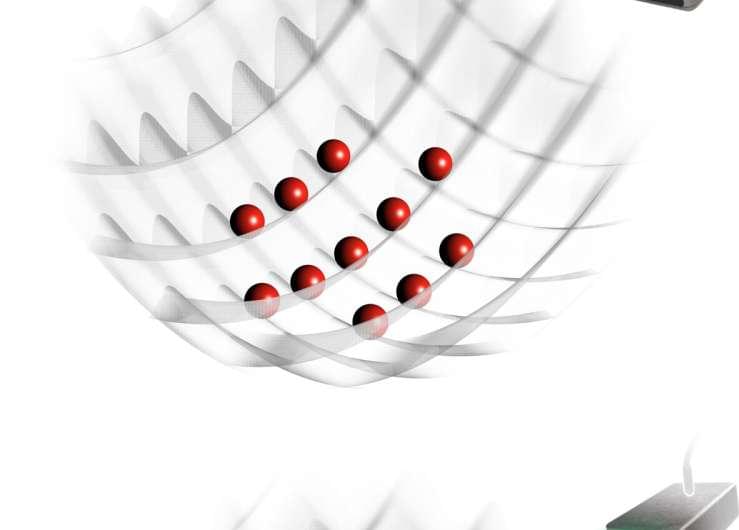
Polaritons are quasiparticles that are formed when photons couple strongly with excitations of matter. These quasi-particles, which are half-light and half-matter, underpin the functioning of a wide range of emergent photonic quantum systems, including semiconductor-based nanophotonic devices and circuit quantum electrodynamic systems.
Researchers at Stony Brook University have recently introduced a novel polariton system in which the matter excitation is replaced by an atom in an optical lattice and the photon by an atomic matter wave. This system, introduced in a paper published in Nature Physics, results in matter-wave polaritons, and could open interesting possibilities for the study of polaritonic quantum matter.
“A few years ago, we became interested in the idea of using ultracold atoms to simulate the dynamical behavior of quantum emitters,” Dr. Dominik Schneble, head of the team of researchers who carried out the study, told Phys.org. “It turns out that it is possible to build an artificial atom that spontaneously emits matter waves, in much the same way as an atom spontaneously emits a photon (as described by the so-called Weisskopf-Wigner model).”